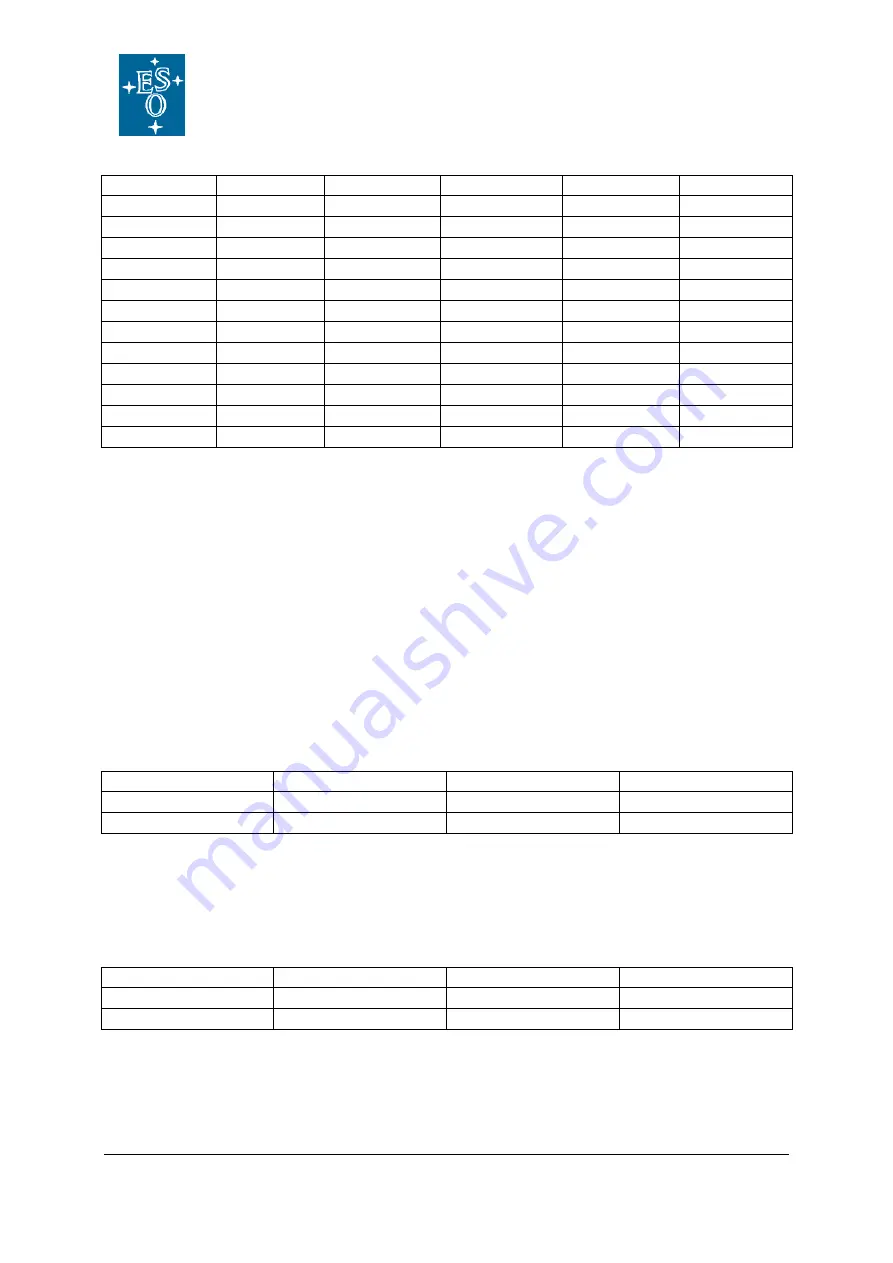
Doc:
Issue
Date
Page
VLT-MAN-ESO-14650-4942
P96
24.06.2015
30 of 161
ESO, Karl-Schwarzschild-Str. 2, 85748 Garching bei München, Germany
Arm
airmass
Type of ratio average
range
std
UVB
1.10
45/parall
0.98
0.84-1.0
0.19
UVB
1.10
90/parall
0.83
0.74-1.0
0.15
UVB
1.51
45/parall
0.84
0.56-1.0
0.13
UVB
1.51
90/parall
0.63
0.25-1.0
0.26
UVB
2.20
45/parall
0.31
0.05-0.64
0.20
UVB
2.20
90/parall
0.18
0.04-0.23
0.06
VIS
1.10
45/parall
0.87
0.83-0.94
0.03
VIS
1.10
90/parall
0.80
0.75-0.92
0.04
VIS
1.51
45/parall
0.92
0.87-1.0
0.04
VIS
1.51
90/parall
0.72
0.47-1.0
0.17
VIS
2.20
45/parall
0.63
0.37-0.83
0.16
VIS
2.20
90/parall
0.31
0.28-0.34
0.02
e) Efficiency of observations without ADCs at given airmass and slit angle
but with different tracking wavelength
Up to now only in IFU mode, the user can choose the tracking wavelength. This option will be
considered for the SLIT mode as well. In the following tables we compare the flux ratios other
the orders for the observations at 470nm (default tracking wavelength) with respect to the
observation at another wavelength. The observations were performed without ADCs, in
nodding mode at AM=1.35.
If the user chooses the tracking wavelength equals to 600nm instead of 470nm
(F470/F600)
Arm
Average
range
std
UVB
0.96
0.66-1.47
0.25
VIS
0.85
0.74-1.00
0.09
For the UVB arm, the ratio is higher in blue orders (~1.4) with the 470nm tracking wavelength
and lower in the red orders (~0.7) compared to the 600nm tracking wavelength. This is the
same evolution for the VIS arm.
Same measurements but with the tracking wavelength at 850nm instead of 470nm
(F470/F850)
Arm
Average
range
std
UVB
1.04
0.54-1.89
0.45
VIS
0.79
0.62-1.08
0.14
For the UVB arm, the ratio is higher in blue orders (~1.9) with the 470nm tracking wavelength
and lower in the red orders (~0.6) compared to the 850nm tracking wavelength. This is the
same evolution for the VIS arm.
















































